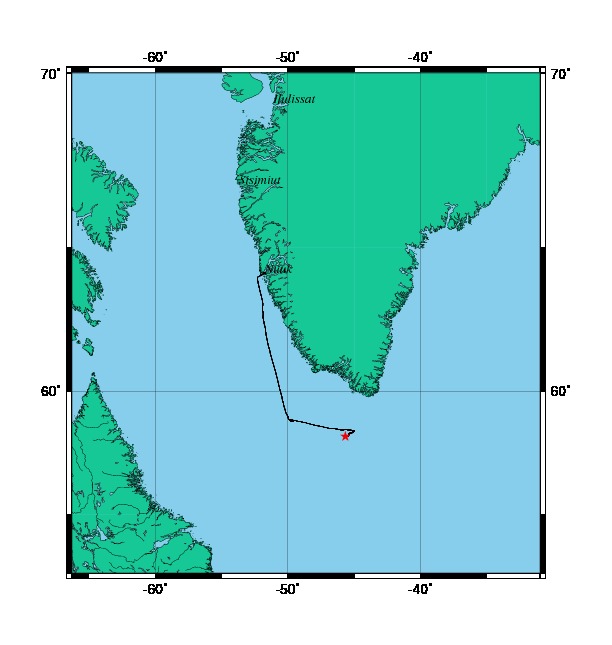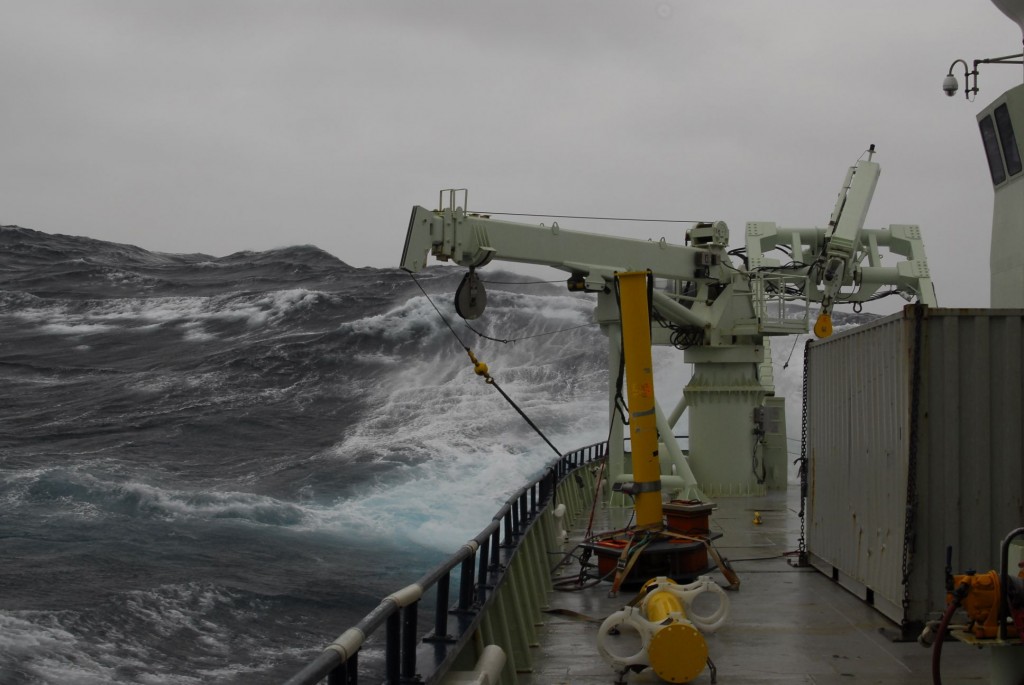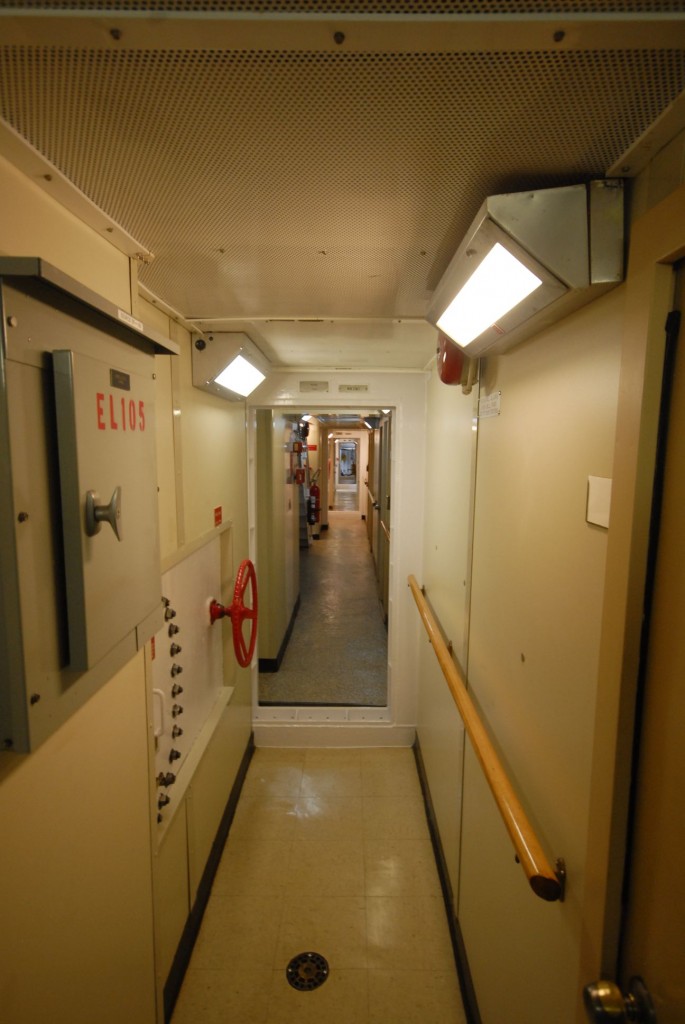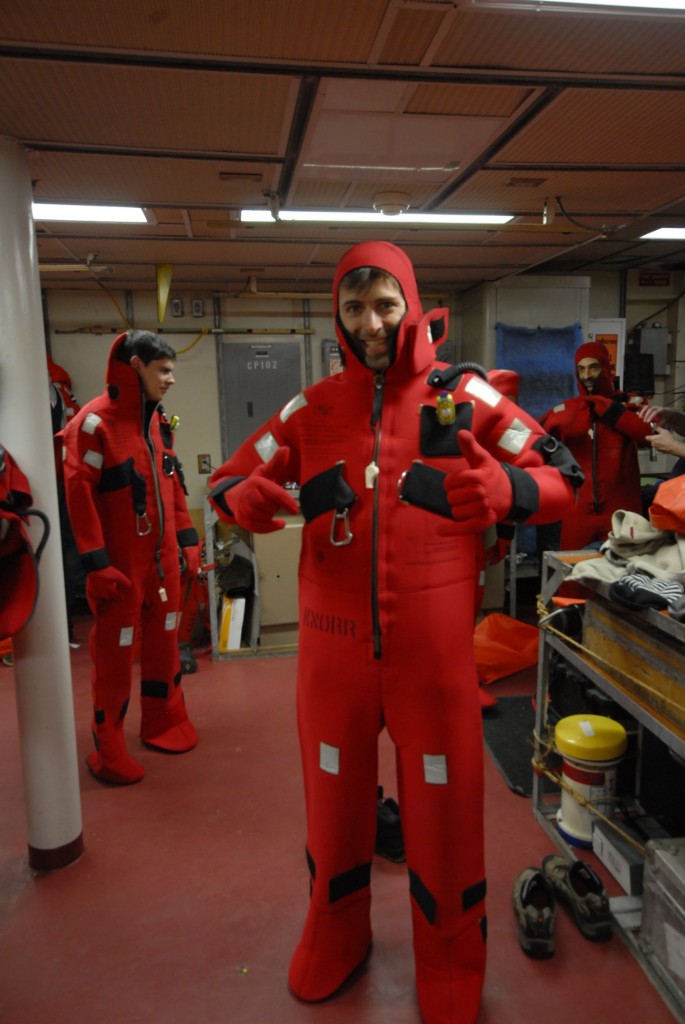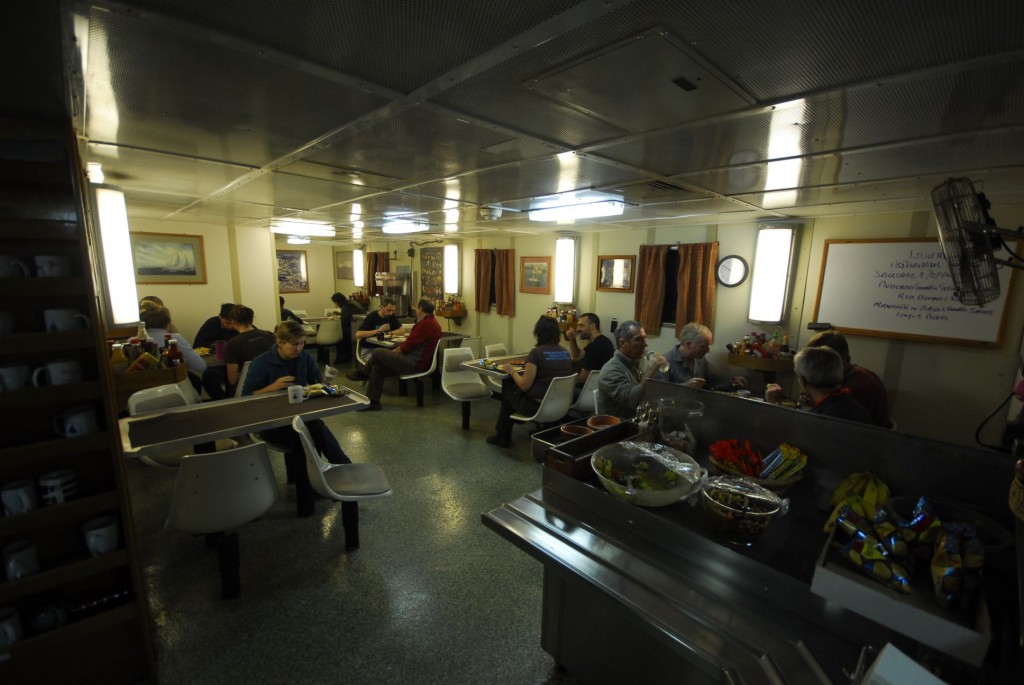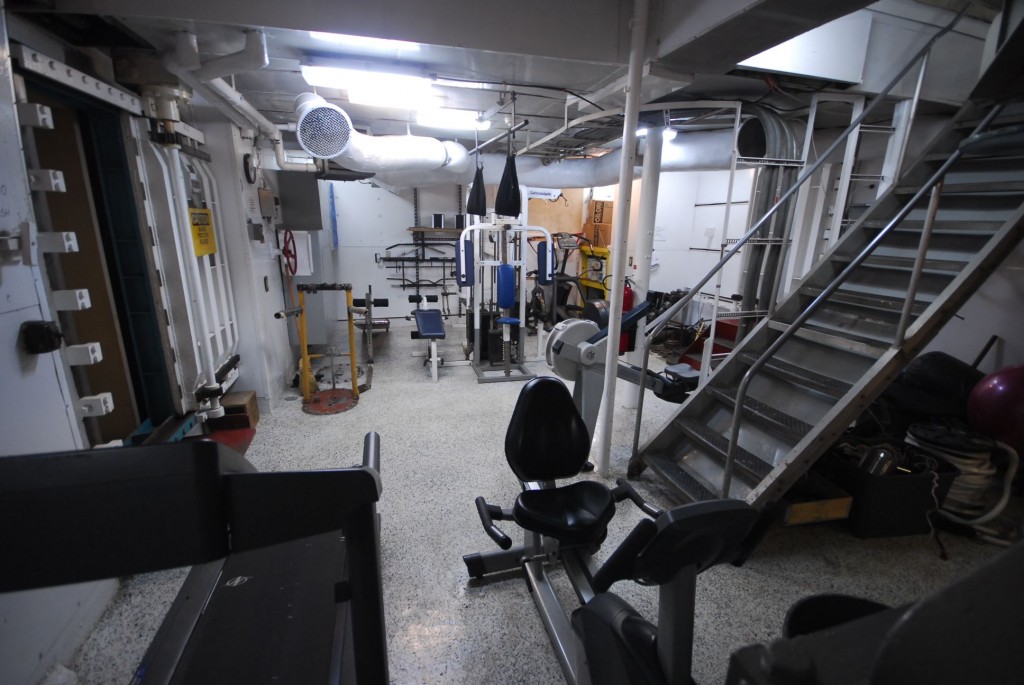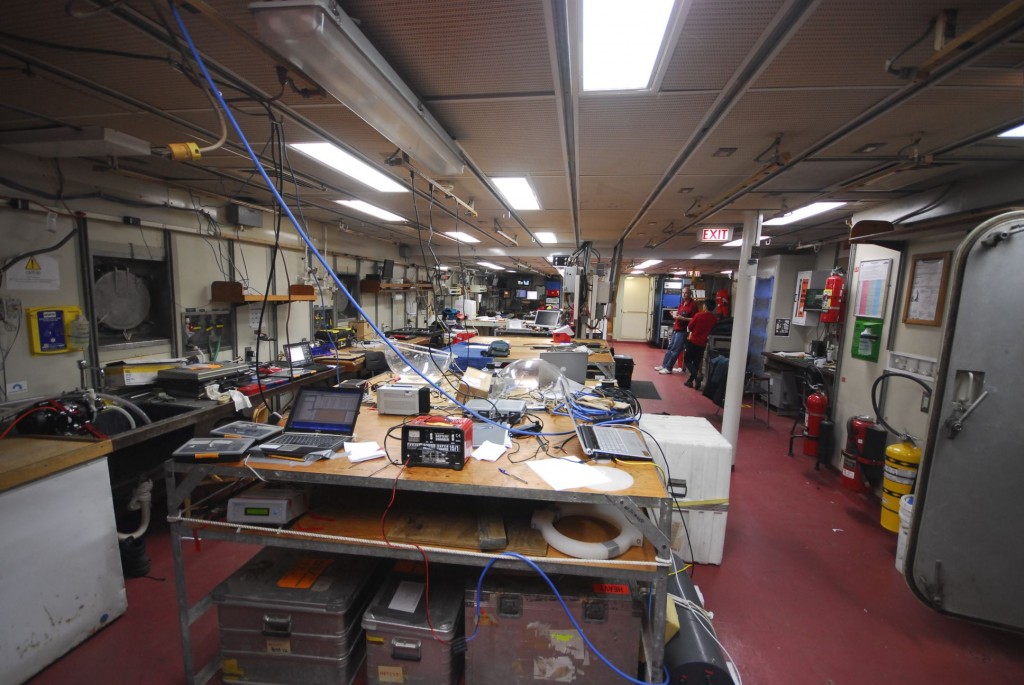I have been at sea for almost a week now and overall everyone seems to have found their sea legs. So far we have been through one storm and are now sitting out a little bit more east at longitude 45W. Initially we were supposed to reach 43W but never made it as conditions got too rough. Instead we halted and deployed some wave properties instruments at sea prior conditions got worst. This is a challenging task to perform and one buoy got smashed on the side of the ship already.
For 2 days now, we have been sitting at this location in a storm with high wind and waves. Winds have been above 20 m/s (38knots) since last night which is great conditions for our project! Waves are huge now and are rolling the ship quite nicely. Currently the weather decks are secured, meaning we are constrained within the ship. If we want to go out, we have to notify the ship’s officers on the bridge so they can keep a good eye on us and make sure we return safely inside. We’ll stay in position here until at least Thursday morning and then we will head South or South-West most likely.
Although this is my 8th time on a ship at sea, this is my first time on the R/V Knorr. The daily life is similar routine as on other ships and I thought I would share it with you. It takes a bit some time to get acquainted with a ship and the most difficult part for me is to become familiar with the different pathways onboard and where they lead to. At first, it feels like being in a maze.
The rooms are a bit bigger compare to other ships I have been on but remain relatively small. They are usually shared by 2-3 people. This ship can carry a scientific party of 32 to sea but on this cruise we are about 15 scientists so we each have our own room which is nice. My room is on the 2nd deck, just above the water line and forward. I am very close to the anti-roll tank system of the ship, a partially filled tank to reduce the roll motion. It goes without saying that this system makes some rather interesting noises in addition to the ones from the sea. Sometimes I feel like I am sleeping inside the belly of a whale, sometime I think I hear dolphins, or sometimes I am simply taking a nap on the beach with the sound of crashing waves. Overall I do get some good night sleep but I have to use ear plugs as there are many weird sounds in this room.

My bed (or berth) is the lower bunk. Notice the orange equipment on top of the cabinet in case of emergency evacuation.
About once a week we also have safety drills and have procedures to follow in case of fire and emergencies, ship abandonment or man overboard. At the beginning of each cruise, all the scientists have to try out their survival suits and life jackets located in their room. It is always a fun exercise that hopefully we will never have to perform in real situation. First you have to step inside the large booties, then pass one of your arm, your head and the other arm. Finally you have to close the zipper up the front with your bulky gloves. The difficulty for me seems to be afterward when trying to remove the suit on my own.
Food on the ship has been rather good so far (although I might not think the same after 5 weeks). All meals are served in a cafeteria, also called the galley, and there are usually 2 choices for main dishes. The main thing I need to adjust to as always is the serving schedule which is set at very specific times. Breakfast is from 7:30 to 8:15AM, lunch from 11:30AM to 12:15PM, and dinner from 5 to 5:30PM.
To get a little exercise on the ship, there is a gym with numerous devices. The main difference with your home gym is that here you have to make full use of your reflexes and balance while using one of those device because you move back and forth with the waves at the same time. You can very rapidly alternate between different levels of difficulties whether or not you are in the same direction as the ship moves.
During the day, I spend most of my time checking our instruments inside the ship and outside when weather allows and I make sure we are collecting and saving our data preciously. My office is in the upper lab on the 1st deck where my colleague and I have our computers setup. The other scientists are in the main lab down below. From our computers, we massage the collected information to make sure everything is in order and that things go accordingly. Even if the weather gets bad, I can still monitor our sensors from inside which is nice. If things go wrong however, this is a different story. With that said, time to go check the instruments.
